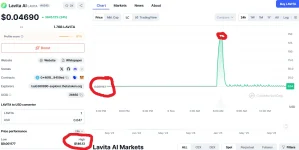Bitcoin miner profitability has been under significant pressure in recent weeks, driven by a combination of declining hashprices, record-high network hashrates, low transaction fees, and a recent correction in Bitcoin's price. According to a November 4, 2025, analysis, hashprice—a key metric measuring daily revenue per petahash per second (PH/s)—has dropped to a multi-month low of $43.1 PH/s, squeezing miners' margins amid Bitcoin's price dip and subdued network activity. This represents a roughly 20% decline in profitability over the past month, with overall miner revenue per day falling 22% from $59.56 million to $46.37 million as of early November 2025.
Despite these challenges, some large-scale miners have reported strong quarterly results by diversifying operations and leveraging higher average Bitcoin prices year-over-year. For instance, Marathon Digital (MARA) announced a record Q3 2025 revenue of $252 million on November 4, 2025—up 92% from the previous year—swinging from a $124.8 million loss to a $123.1 million net profit. The company attributed this to an 88% rise in Bitcoin's average price, paired with new power deals and AI infrastructure integrations, though mining volume itself didn't drive the bulk of the gains. MARA's stock dipped 5.9% following the report, reflecting broader market concerns over sector-wide pressures.
Broader data points highlight the strain:
- Average Mining Costs: As of November 3, 2025, the estimated average cost to mine one Bitcoin stood at approximately $114,233, while Bitcoin's price hovered around $101,901 on November 5, 2025, resulting in a cost-to-price ratio of 1.07—indicating that many operations are operating at or below breakeven.
- Network Hashrate: Bitcoin's hashrate hit a record 1.13 zettahashes per second (ZH/s) in October 2025, increasing competition and energy demands, which further erodes profitability for less efficient miners.
- Fee Revenue Impact: Daily fee revenue has declined from about $576,000 earlier in 2025 to $410,000, making miners more reliant on the fixed 3.125 BTC block reward and tying earnings closely to spot prices. If Bitcoin falls below $100,000, widespread miner shutdowns could occur, potentially destabilizing the network short-term.
On X (formerly Twitter), recent discussions echo these trends, with users noting that institutional liquidity is shifting off-chain (e.g., via ETFs and exchanges), reducing on-chain activity and fees, which exacerbates profitability issues. Some highlight opportunities in efficient setups, like those using low-cost renewable energy (e.g., $0.035/kWh in Norway vs. the average $0.08–$0.12/kWh), or acquiring hashrate on-demand to bypass hardware ownership. Others warn of a "strange divergence" where Bitcoin's market cap grows institutionally, but on-chain metrics remain subdued.
For real-time tracking, resources like ASIC Miner Value and Hashrate Index provide ongoing profitability calculators and weekly updates across various ASIC models and coins. Overall, while select miners thrive through scale and diversification, the sector faces headwinds that could intensify without a sustained Bitcoin price recovery or fee resurgence.



